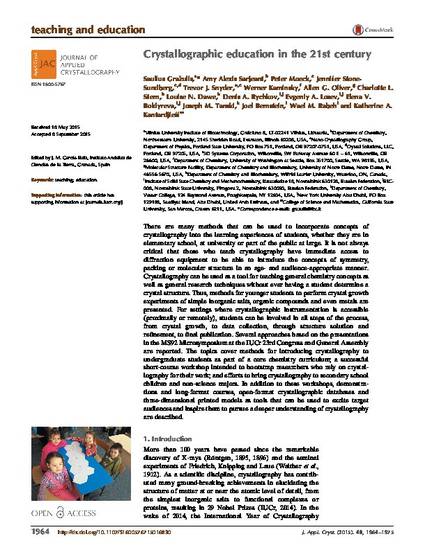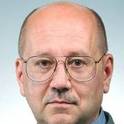
- Crystallography -- Study and teaching (Higher),
- Science -- Study and teaching (Higher)
There are many methods that can be used to incorporate concepts of crystallography into the learning experiences of students, whether they are in elementary school, at university or part of the public at large. It is not always critical that those who teach crystallography have immediate access to diffraction equipment to be able to introduce the concepts of symmetry, packing or molecular structure in an age- and audience-appropriate manner. Crystallography can be used as a tool for teaching general chemistry concepts as well as general research techniques without ever having a student determine a crystal structure. Thus, methods for younger students to perform crystal growth experiments of simple inorganic salts, organic compounds and even metals are presented. For settings where crystallographic instrumentation is accessible (proximally or remotely), students can be involved in all steps of the process, from crystal growth, to data collection, through structure solution and refinement, to final publication. Several approaches based on the presentations in the MS92 Microsymposium at the IUCr 23rd Congress and General Assembly are reported. The topics cover methods for introducing crystallography to undergraduate students as part of a core chemistry curriculum; a successful short-course workshop intended to bootstrap researchers who rely on crystallography for their work; and efforts to bring crystallography to secondary school children and non-science majors. In addition to these workshops, demonstrations and long-format courses, open-format crystallographic databases and three-dimensional printed models as tools that can be used to excite target audiences and inspire them to pursue a deeper understanding of crystallography are described.

OPEN ACCESS
ACCESS
Originally published in the Journal of Applied Crystallography and can be found online at: http://dx.doi.org/10.1107/S1600576715016830